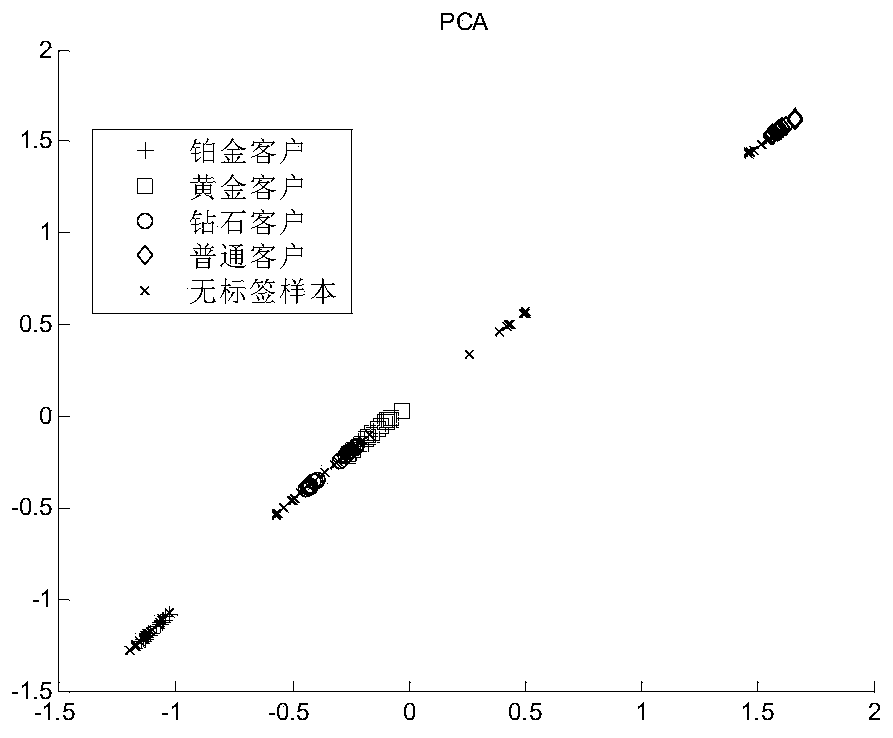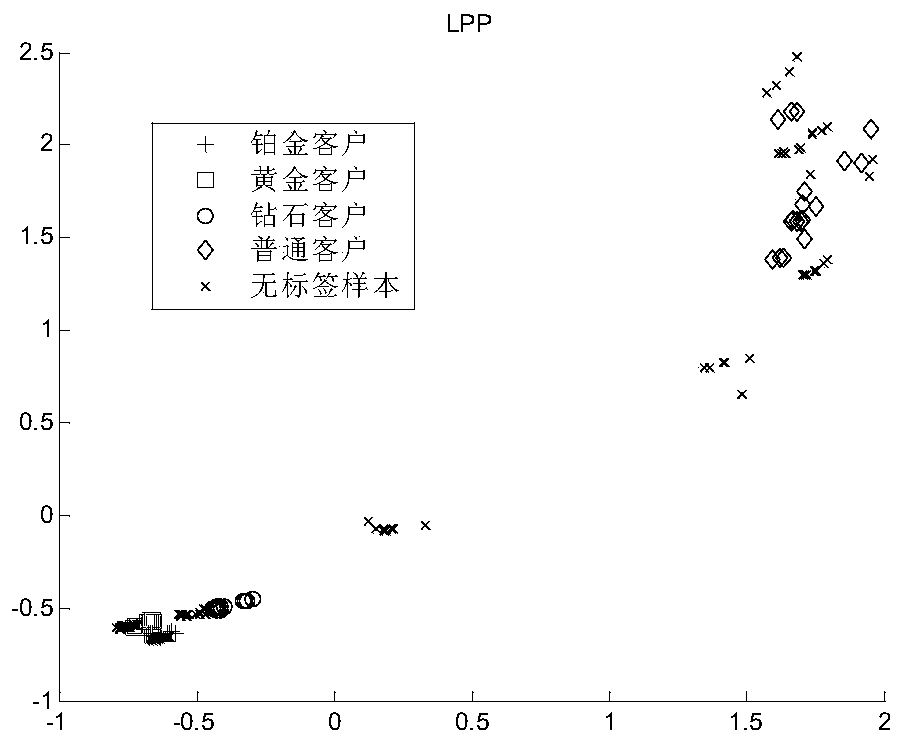Logistics enterprise customer classification method based on semi-supervised kernel Fisher discriminant analysis
A Fisher discrimination, enterprise customer technology, applied in character and pattern recognition, instruments, computer parts, etc., can solve the problems of generalization performance degradation, time-consuming and labor-intensive, and unlabeled samples remaining.
- Summary
- Abstract
- Description
- Claims
- Application Information
AI Technical Summary
Problems solved by technology
Method used
Image
Examples
Embodiment 1
[0061] A kind of logistics enterprise customer classification method based on semi-supervised nuclear Fisher discriminant analysis, described Fisher discriminant analysis algorithm comprises the following steps:
[0062] In order to deal with multimodal or outlier problems, the present invention adopts local FDA (Local FDA, LFDA) algorithm, and its objective function is defined as:
[0063]
[0064] Here, S lb , S lw ∈R d×d represent the local inter-class scatter matrix and the local intra-class scatter matrix respectively, which are defined as:
[0065]
[0066]
[0067] Here W lb , W lw is an n×n matrix, and
[0068]
[0069]
[0070] represented in class y i ∈ The number of labeled samples in {1, 2, ..., c}, A ij is based on x i and x j measure of similarity between them.
[0071] For all i, j, when A ij = 1, LFDA is equivalent to the traditional FDA. Therefore, LFDA is also considered a localized version of traditional FDA. from In the defin...
Embodiment 2
[0090] A method for classifying logistics enterprise customers based on semi-supervised nuclear Fisher discriminant analysis, the semi-supervised nuclear Fisher discriminant analysis algorithm includes the following steps:
[0091] When there is unlabeled sample information in the sample set, in order to reasonably use the unlabeled sample information to guide the learning of supervised algorithms, it is necessary to consider the spatial consistency assumption of the sample set. For the LFDA dimensionality reduction method, spatial consistency is to ensure that the samples in the global and local neighborhoods in the original high-dimensional space still maintain this domain relationship in the dimensionality reduction space. Introducing the above spatial consistency assumption as a regularization term into the objective function of local Fisher discriminant analysis, the general framework of semi-supervised Fisher discriminant analysis is defined as
[0092]
[0093] in
...
Embodiment 3
[0114] In order to verify the logistics enterprise customer classification method based on semi-supervised nuclear Fisher discriminant analysis, this experiment classifies the customers of a large domestic logistics enterprise. According to the commonly used classification standard of the logistics enterprise obtained from the on-the-spot investigation, the logistics enterprise customers are divided into four categories: platinum customers, gold customers, diamond customers and ordinary customers.
[0115] In order to verify the classification performance of the logistics enterprise customer classification method based on the semi-supervised kernel Fisher discriminant analysis, the present invention first standardizes the logistics enterprise customer data, then introduces the semi-supervised idea, and uses the semi-supervised KFDA algorithm to standardize the logistics enterprise Classify customer data. Experimental environment: Windows7 operating system, CPU: Inteli7, 3.4G p...
PUM
 Login to View More
Login to View More Abstract
Description
Claims
Application Information
 Login to View More
Login to View More - R&D
- Intellectual Property
- Life Sciences
- Materials
- Tech Scout
- Unparalleled Data Quality
- Higher Quality Content
- 60% Fewer Hallucinations
Browse by: Latest US Patents, China's latest patents, Technical Efficacy Thesaurus, Application Domain, Technology Topic, Popular Technical Reports.
© 2025 PatSnap. All rights reserved.Legal|Privacy policy|Modern Slavery Act Transparency Statement|Sitemap|About US| Contact US: help@patsnap.com



